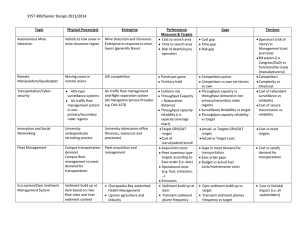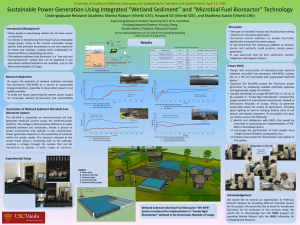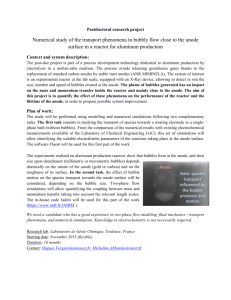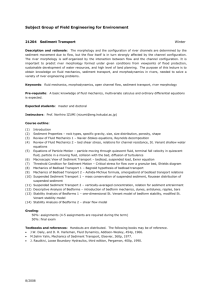Predicting In Situ Sediment Fuel Cell Potential PowerPoint
advertisement
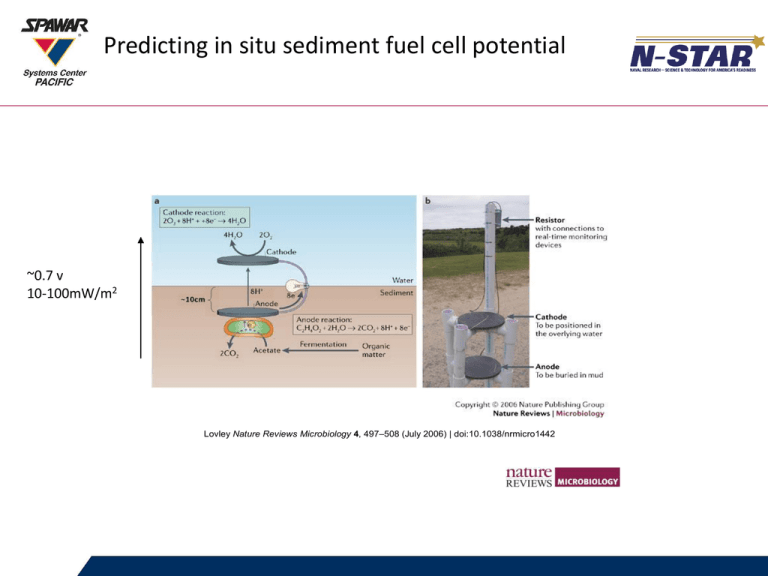
Predicting in situ sediment fuel cell potential ~0.7 v 10-100mW/m2 Lovley Nature Reviews Microbiology 4, 497–508 (July 2006) | doi:10.1038/nrmicro1442 Gear for field data collection: Small fuel cells original improved anaerobic microbial chamber to determine bacterial densities in sediment Intersection of 3 programs: Naval Facilities-sponsored turtle survey ILIR sediment fuel cell potential use a quick probe to check impact of: •sediment carbon and grain size •temperature •oxygen •initial bacteria populations ONR-sponsored fuel cell design MFC System Source NRL OSU MSU PI Tender Reimers Lewondowsky Anode Material Multiple Thin Carbon Plates Braid of Fine Carbon Threads Single Thick Carbon Plate Anode Location Buried in Sediment In Water of Bottom-Sealed Chamber Buried in Sediment Cathode Material Braid of Fine Carbon Threads Braid of Fine Carbon Threads Ball of Wound Stainless Steel Wire Cathode Location Suspended by Float in Water Column Suspended by Float in Water Column Suspended by Float in Water Column short-term effects acoustically-tagged green sea turtle Useful application: SSC/NRL fuel cell long-term effects, anode design 2 8 m anode powers hydrophone for 4 months ILIR study results: •important environmental parameters •mapping sediment potential Rich organic carbon and grain size dataset from previous environmental studies Total organic carbon Fine sediments (clays and silts<62um) We can combine environmental factors to predict fuel cell power Power density=4.6 ln(TOC)+13.8 (based on 2.6 cm2 probe at 20 oC) Power density=-0.89 ln(cm2)+15 (based on 3 fuel cells at TOC=2 and 19oC) Power density=0.65 (temp)-6.5 (based on 8 m2 anode and TOC=2) Assume 1 m2 anode, multiply power density by 0.43 Use historical mean +- 95% water temperature data, multiply power density by 0.89, 1.4, 0.43 Ask me about this inflection! Use all field data, calculate power density Sediment power maps Generic instrument (e.g. satellite transmitter) duty cycle Predicted sediment fuel cell power density with 1 m2 anode over 2009 water temperature range at 14.3 o C (lower 2.5%) at 18.9 o C (mean) at 23.7 o C (upper 95.5%) Time to charge for a typical 10 minute, 240 byte, 1.5 W Orbcom satellite transmission, assuming 60% voltage step-up efficiency and water temperature of 18.9 oC

